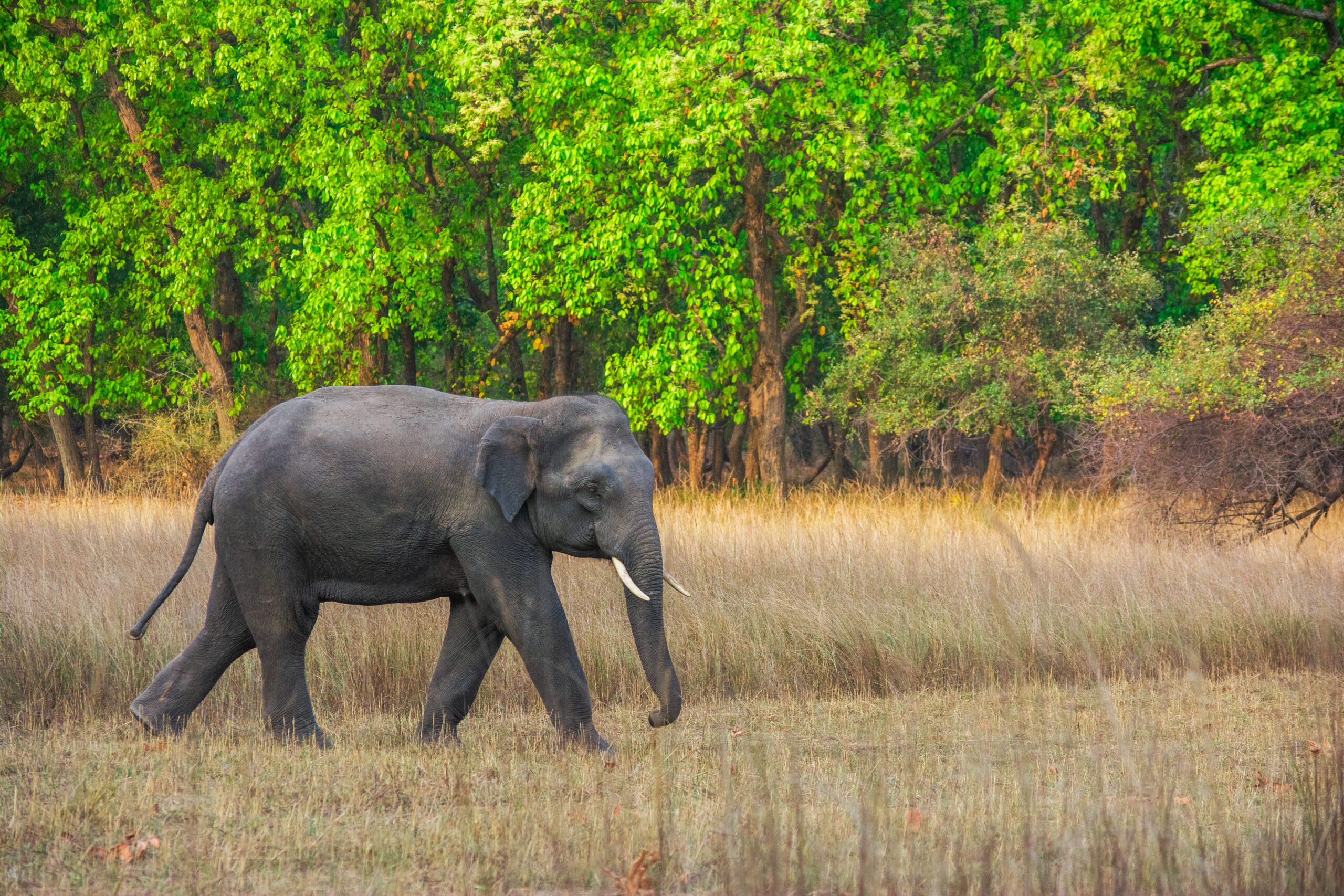“When the elephants walk, the forests walk with them.”
– Sudha Ramen
In the summer of 2018, a herd of 40-45 migrant elephants made their way into the sprawling landscape of Bandhavgarh. Madhya Pradesh did not have a resident elephant population, for over a century till 2018. Most wildlife biologists believed that they would eventually leave, as the landscape was fairly dry with limited waterbodies. But these migrant elephants in India surprised everyone, as they continued to thrive in the vast bamboo forests of Khitauli and beyond, for the last five years.
Elephants are gentle giants and magnanimous beings that are beyond valuable to our ecosystem. They are the largest living land mammals with an incredible amount of intelligence and highly social behavior.
The Indian Elephant (Elephas maximus indicus) is one of the sub-species of the Asian Elephants. These are smaller than their African cousins and are natives of India and South Asia. The Indian Elephant is the largest terrestrial mammal of India.
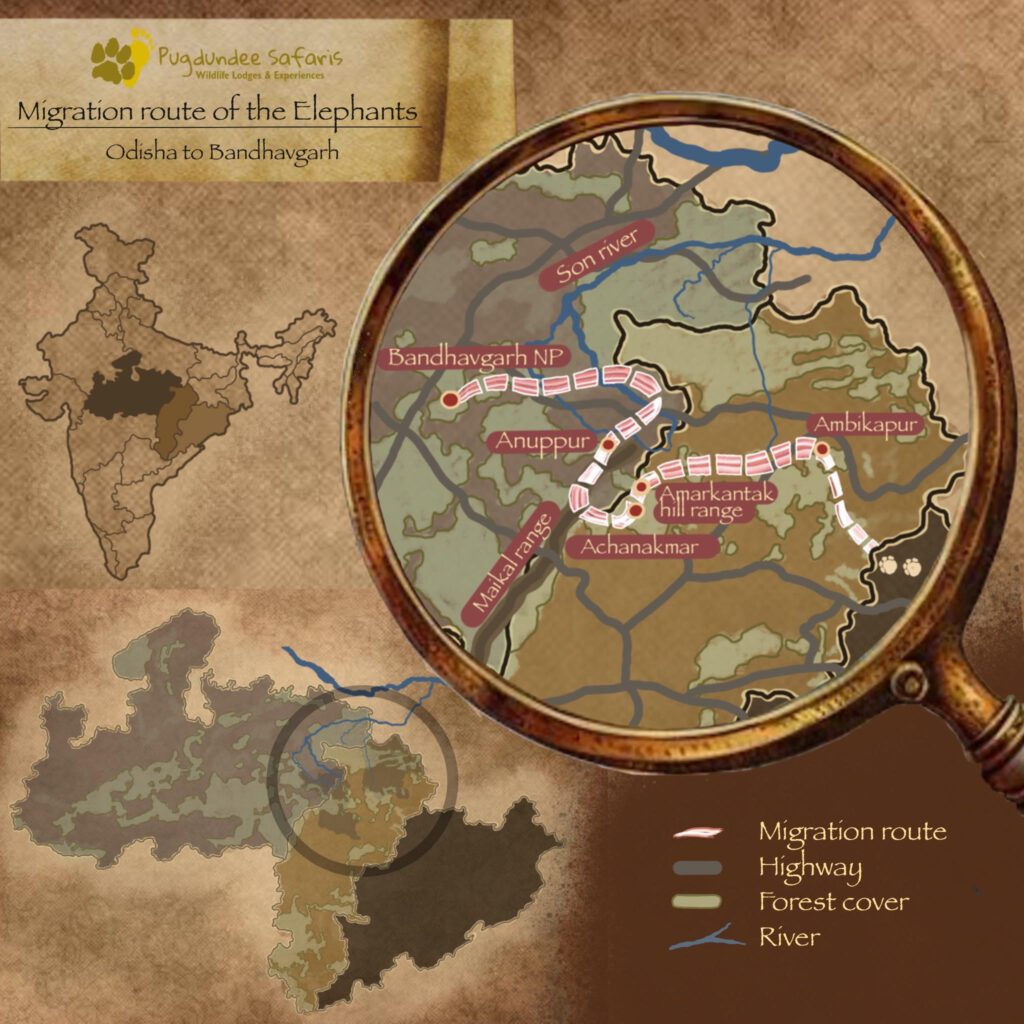
Elephant Migration in Madhya Pradesh: Route Taken by the Migrating Elephants
A herd of 40-45 elephants migrated into the Bandhavgarh forests, from the neighbouring state of Chattisgarh and Orissa border.
They made their passage to Madhya Pradesh from Anuppur, via Shadol district, crossing the Son River and then ambling through the Northern part of the Maikal range of hills. Thereafter, they entered the southern part of the Manpur buffer, only to land on the grounds of the Khitauli range of the Bandhavgarh Tiger Reserve.
There were no records of elephants in the state for over a hundred years. The last of record was from 1905, in the Amarkantak region of the Anuppur district.
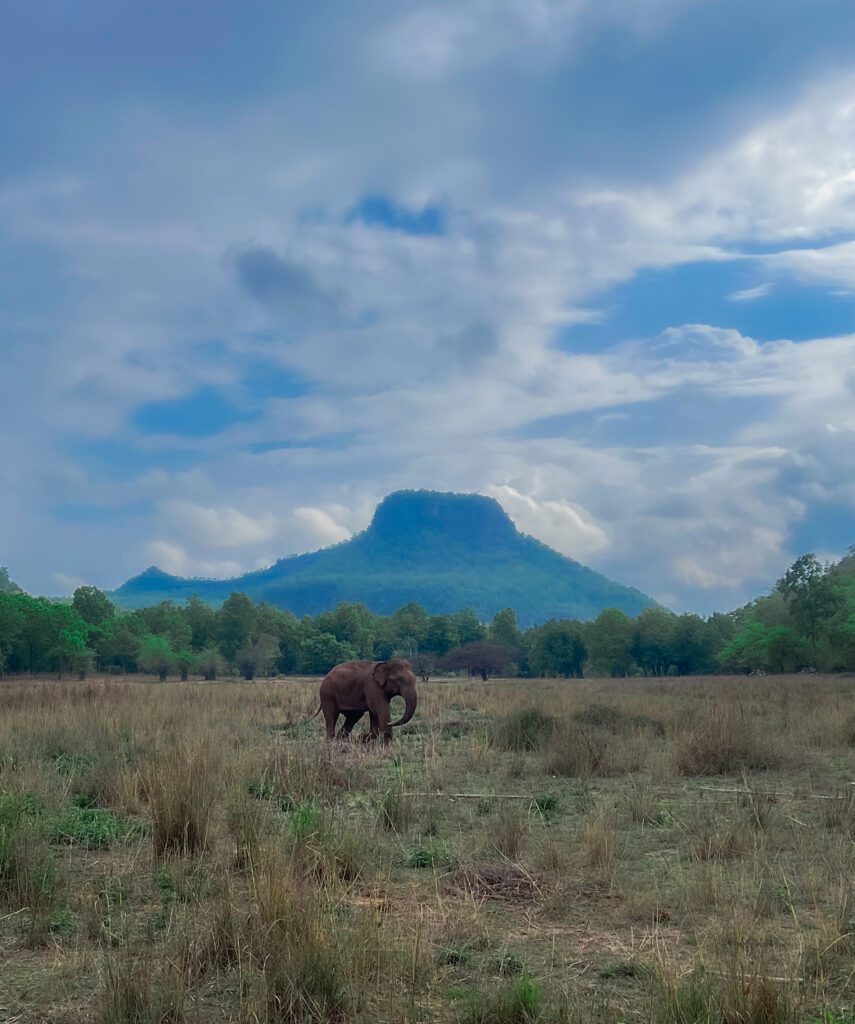
Elephants of Bandhavgarh National Park in India
The migrant elephants are now permanent residents of the Bandhavgarh National park and can be frequently spotted in the core and buffer areas.
During summers and other seasons, there are multiple safari encounters with the elephant herds.
Ashish Tirkey, our wildlife naturalist, and Manager at Tree House Hideaway recollects an incident from 2023.
“I recall watching these pachyderms this summer at Sukhipatiha (in the Magadhi zone) where the famous tigress, Dotty’s daughter was enjoying an afternoon siesta. Soon enough, she was woken up from her slumber. A herd of elephants had arrived. She quickly moved behind a bund, while keeping a vigilant eye, as the elephants spent time meandering around and quenching their thirst.”
The Bandhavgarh National Park currently has a population of roughly 50 elephants.
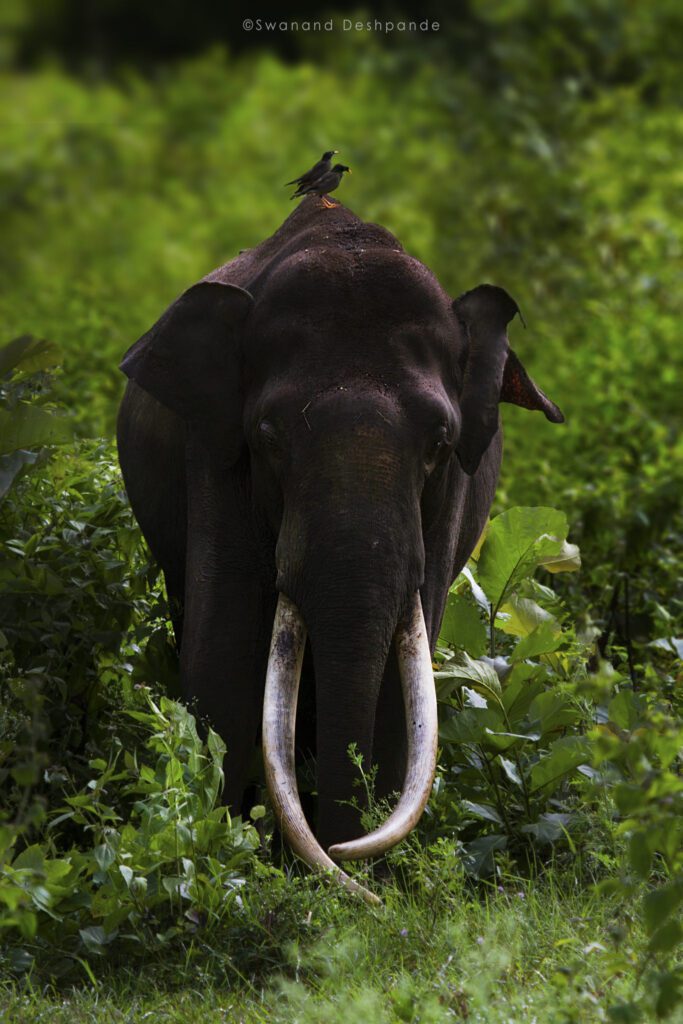
Human-Elephant Conflict
Habitat loss has forced the elephants to raid farms, plantations, and settlements in the quest for alternative sources of food. After all these habitats have replaced their original home.
The pachyderms frequently raid paddy crops at Bandhavgarh during the months of September– October. They even enter the village homes once they catch on to the scent of Mahua when it is stored.
Bamboo is one of their favourite feasts, and sometimes when the villagers visit the jungle for firewood, or to illegally collect bamboo, a conflict arises.
The Forest department uses a GPS navigation system to keep track of the wild elephants in and around the core and buffer areas of the park. The forest guards alert villagers, once they receive messages about elephant movement in nearby areas, through wireless.
In a couple of instances, the elephants also made their way to our Pugdundee Safari resort in Bandhavgarh, destroying some of our crops and boundary walls.
The human-elephant conflict can be reduced and managed, provided we work hand in hand by involving the local communities, forest department and the NGOs, while improving the monitoring and law enforcement processes.
In a unique development, an NGO is Assam, Hati Bondhu recently found an interesting alternative which involves growing paddy in some fields, especially dedicated to the elephants; so that the farmers can grow their crops separately without worrying about elephant rampage.
The Future of Wild Elephants in Bandhavgarh
Aniruddha Dhamorikar, wildlife conservationist and researcher with WWF, writes in his blog post, No Country for Wild Elephants:
The elephants were simply tracing back their historic paths in Madhya Pradesh – it was us who labelled them outsiders in their own ancestral country.
There are several instances of vagrant elephants, often solitary, making their way in to the highlands. A young solitary male once ventured into Panna district in 2011, and was captured close to Sakariya village. He was the first in 300 years to make his way to Panna, once the “best” place to find wild elephants.
In spite of being the most revered of wild animals – indeed, you will find an idol, or a frame of Ganesha, the elephant-headed god, in almost every home and temple, even at a mining corporation office – in spite of people’s tolerance lasting centuries; the wild elephant has found itself unwelcome in their own ancestral country.
Aniruddha also shared with us during the course of a conversation:
“Elephants in Central India are not migrating naturally, but have been compelled to move from the eastern states where their habitat is under threat, due to coal mining etc. Madhya Pradesh acts as a refuge to these wild elephants. The initial worries how they will adjust to the landscape and how the elephants and people of Bandhavgarh will adjust to one another, has indicated tolerance. This can be attributed to the conservation and conflict mitigation measures taken up by the state forest department, and NGOs. Even though there may be instances of crop damage etc.”
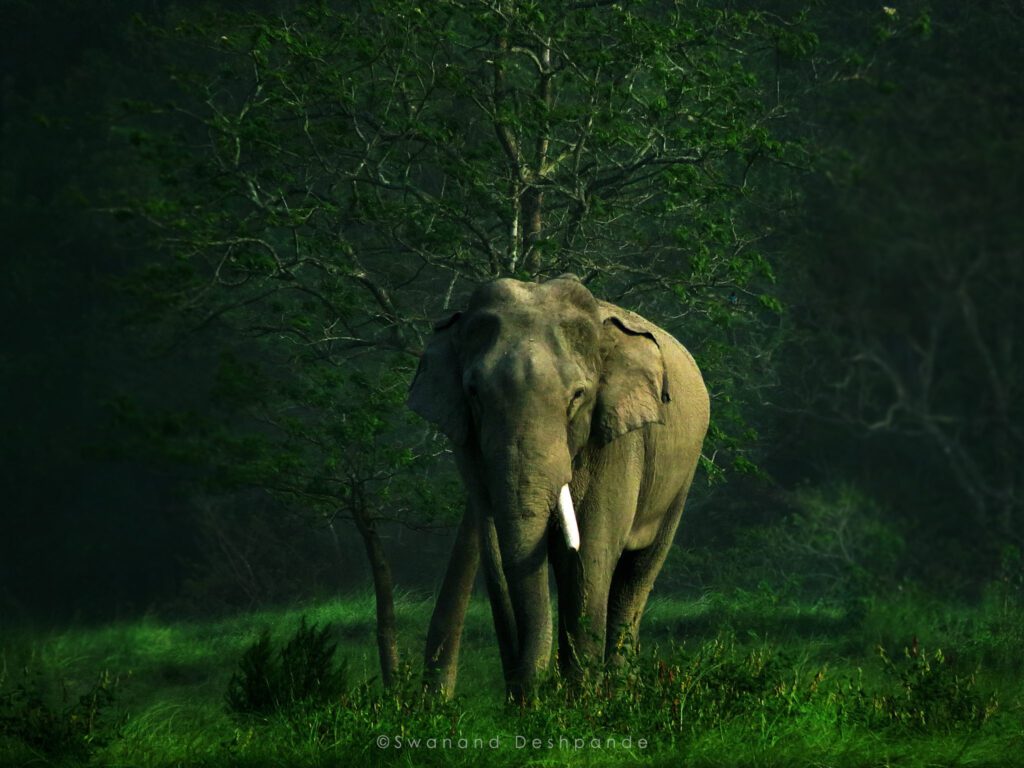
Credits: Swanand Deshpande
The elephants of Bandhavgarh are thriving wholeheartedly, even though they may be displaced. This is surprising and heartening all at the same time, for conservationists and people in the wildlife circle.
Fact Forward with Elephants in India
How many elephants are found in India?
India is home to over 29,964 elephants, according to the last elephant census done in 2017. India is home to more than 60 percent of the world’s wild Asiatic elephant population.
Asian elephants are listed as Endangered on the IUCN Red List of Threatened Species. Habitat loss, fragmentation, poaching and human-elephant conflicts are some of the major threats faced by these gentle, wise and large-hearted giants.
Where are Elephants found in India?
In India, there are a total 33 elephant reserves which span 14 states and 76,508 square kilometres.
History reveals that elephants were found all over India, during the Mughal empire including many part of Centeral India like Marwar, Chanderi, Satwas, Bijagarh and Panna.
Currently, wild elephants in India are distributed across South India – Karnataka, Andhra Pradesh, Kerela; North East including Assam, Meghalaya, Northern West Bengal, Central Indian states of Odisha, South West Bengal and Jharkhand, Bandhavgarh -Madhya Pradesh; and North-West India in Uttarakhand and Uttar Pradesh.
Which state has the maximum number of Elephants in India?
With a population of 6,399 elephants, Karnataka stands out with the highest population of elephants. On August 9, 2023, the state census revealed an increase of 350 elephants since the previous census, making it the highest elephant-populated region in the country
According to the 2017 data, Karnataka already had the highest number of elephants (6,049), followed by Assam (5,719) and Kerela (3,054).
Here’s where the elephant population is found in Karnataka:
Bandipur Tiger Reserve takes the lead in elephant density, homing 1,116 elephants. The Nagarahole Tiger Reserve closely follows with 831 elephants. The (Biligiri Rangaswamy Temple) BRT Tiger Reserve, is home to 619 elephants, while the MM Hills Wildlife Sanctuary has a population of 706 elephants.
What’s the difference between Asian Elephants and African Elephants?
Asian elephants have smaller ears as compared to the large fan-shaped ears of African elephants.
Only some male Asian elephants have tusks, while both male and female African elephants grow tusks.
African elephants have rounded heads, while Asian elephants have twin-domed heads.
The African elephant also has two sub-species – The Savanna elephant and the Forest elephant, the former being larger than the latter.
African savanna elephants are about 8,000 kg and are between 10 and 13 feet at the shoulder. Asian elephants weigh 5,500 kg and are about 11.5 feet tall at the shoulder.
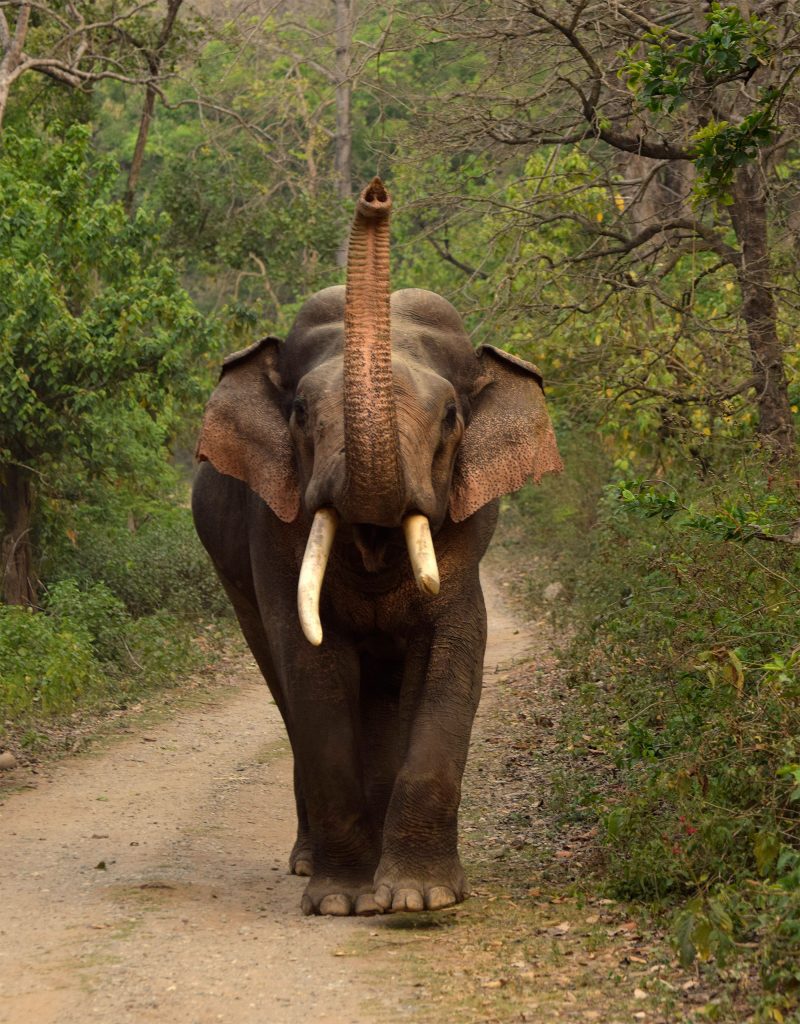
The elephants of Central India are back to their ancestral roots, where they have always belonged. Undoubtedly, it continues to be a hope imparting passage to rites, watching the largest terrestrial mammal reclaim Bandhavgarh, the tiger country of the Central Highlands, as their home territory once again.
“But perhaps the most important lesson I learned is that there are no walls between humans and the elephants except those we put up ourselves and that until we allow not only elephants but all living creatures their place in the sun, we can never be whole ourselves.”
– Lawrence Anthony
Written by: Natasha Sinha
(Gratitude to Ashish Tirkey, Tree House Hideaway, Bandhavgarh and Annirudha Dhamorikar for their extensive support and inputs.)
***************
Get in touch with our trip curators at Pugdundee Safaris, one of the top wildlife travel companies in India, to soak in a bunch of exhilarating forest adventures, including exclusive sightings of the regal elephants of Bandhavgarh.
Visit our the Luxurious Lodges in Different location:
The Best Resort in Kanha National Park, Luxury Resort in Tadoba, Resort in Bandhavgarh National Park, Resort in Pench, Resorts in Satpura, and Panna to watch various fascinating species of the forests frolic in the untamed wild.
Get in touch with our trip curators at Pugdundee Safaris to book your next wildlife holiday.
Our trip curators at Pugdundee Safaris are more than happy to assist you. Phone: +91-011-40132680 Email: [email protected]

